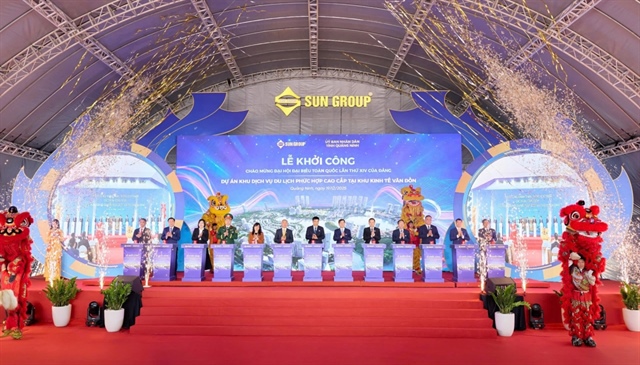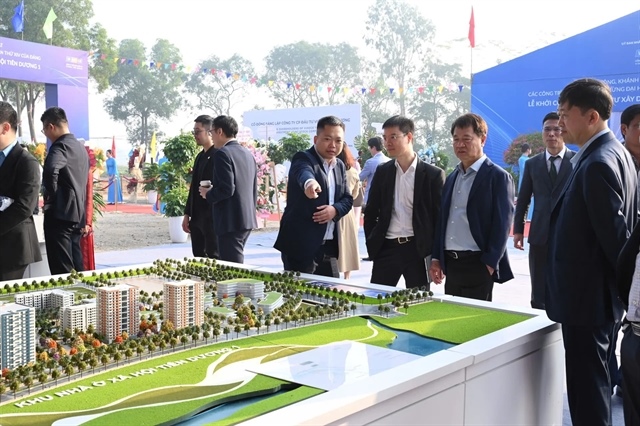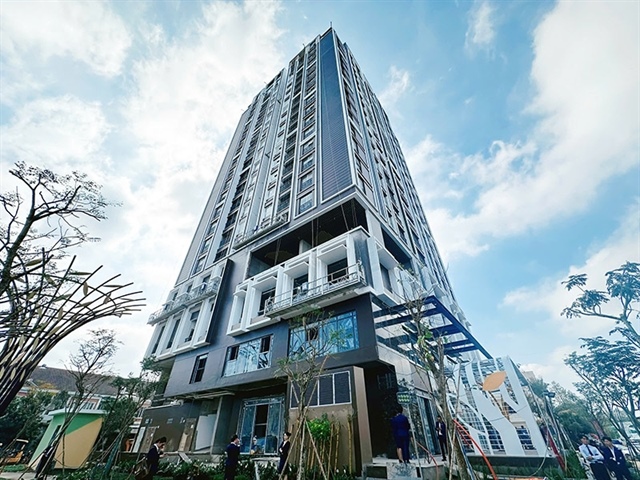Hotels and resorts must go ’green’: experts
Hotels and resorts must go ’green’: experts
Hospitality property owners and developers in Viet Nam should apply green and sustainable architecture and design to respond to the effects of climate change, experts said at a hotel and resort conference which closed on September 25 in HCM City.

Barry Day, the Asia design director of planning and landscape at B+H Architects, told Viet Nam News on the sidelines of the conference that Viet Nam’s hospitality sector must make more serious preparations for climate change.
“The increasing frequency and severity of storms in coastal areas with low-lying land, large population bases and high development densities are costly and are having a major effect on residents’ livelihoods and hotel guest experiences,” he said. “They are also affecting safety as well as raising financial costs for resort developers and operators.”
“While many cities around the world are putting strategies into place to ensure that they are protected against the effects of climate change, in our experience, hospitality developments have yet to address this critical issue in a meaningful way,” he said.
Planning and landscape design are key tools to ensure that resort developments, particularly those along the coast, are resilient and are able to withstand the effects of climate change, while also providing the unique amenities and experiences that guests, operators and developers expect, according to Day.
“What is often missing in Viet Nam’s hospitality sector is a well thought-out and clearly defined master plan that helps to guide the development that is taking place,” he noted.
“The lack of this framework is a critical issue that comes up frequently during our discussions with different operators and developers in the region and, we feel, directly affects potential investment in the region.
"A master plan and development guidelines help position individual sites within a larger framework that addresses regional and ecological strengths, weaknesses, threats and opportunities.
"A master plan also lays the foundation for individual developments that are much more sustainable as they then become part of a larger system that balances the requirements of both development and the local environment and community."
Do Huu Nhat Quang, co-founder of GREENVIET, a local green building consultant, said that “going green” was urgently needed in the design of hospitality properties.
“Who will take the lead in the Vietnamese market? The early bird will get the worm,” he said.
Green design could cost a bit more in the beginning, but in the long term, it saves money and improves property branding, Quang noted.
All involved parties reap multiple benefits from a green property that has lower energy and water consumption, less waste generation, and better indoor air.
“Property owners and operators, for example, will have lower operation costs, while tourists will have better spaces to enjoy,” he said.
Though many hotel chains around the world are applying green building standards, the number is still limited in Viet Nam compared to the potential, according to Quang.
Binu John, director of business development for Singapore-based FBEYE International Pte Ltd, said that Asia had not been “as aggressive as the rest of the world in green and sustainable architecture and design, especially due to the associated costs used to buy materials.”
“But it’s only a matter of time when everyone will be aware of green and sustainable design. It’s the only way forward,” he said. “Viet Nam as well as every other country has to think seriously about how we should respond and care for nature.”
“That is our future. I think everyone has to come together to see how we can reduce energy usage, even with the slight rise in costs in the beginning. In the long run, property owners benefit.”
Lian Miew Ching, design director of Singapore-based CHIL Interior Design in Asia, agreed that there was huge potential for the Vietnamese tourism industry to develop resorts and hotels with a focus on sustainability and ecological responsibility.
“Viet Nam is such a beautiful country. It’s so easy to damage it irreparably. Harnessing innovative and sustainable landscape solutions is not only a long-term investment in the future of the tourism industry, it is imperative,” he said.
FDI investment
In addition to sustainability in the hospitality sector, the status of FDI investment in Viet Nam was also discussed at the event.
Dr Bui Tat Thang, president of the Viet Nam Institute for Development Strategies under the Ministry of Planning and Investment, noted that the country had attracted a high level of investment for the last 30 years.
As of July 20, total FDI registered in Viet Nam had reached $333 billion, with more than 26,210 projects, of which actual FDI capital accounted for 54.7 per cent of total registered capital.
Of the figure, the real estate sector accounted for 16.9 per cent of the total investment.
To date, 129 countries and territories have investment projects in Viet Nam, of which the largest is South Korea, followed by Japan.
In July, the real estate sector ranked second in attracting FDI capital, with a total of 704 projects, according to the Foreign Investment Agency under the ministry.
To continue to improve the investment environment, experts at the event recommended more integrated local supply chains, qualified domestic suppliers, and expanded training for labourers.
The conference also discussed the rising popularity of Airbnb in Viet Nam and the role of vocational training in the tourism sector.
The conference was hosted by Bricsa Consulting, which holds high-end networking and knowledge-sharing conferences.





















